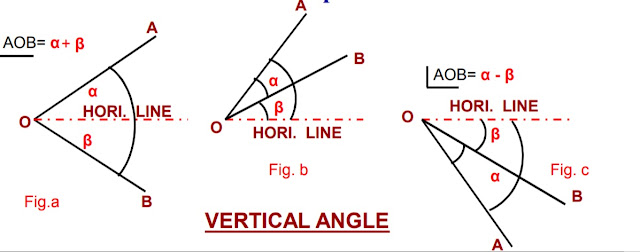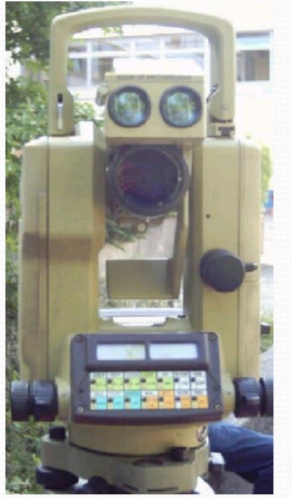MEASUREMENT OF VERTICAL ANGLES
Vertical Angle :
A vertical angle is an angle between the inclined line of sight and the horizontal. It may be an angle of elevation or depression according as the object is above or below the horizontal plane.
MEASUREMENT OF VERTICAL ANGLES:
To Measure the Vertical Angle of an object A at a station O:
(i) Set up the theodolite at station point O and level it accurately with reference to the altitude bubble.
(ii) Set the zero of vertical vernier exactly to the zero of the vertical circle clamp and tangent screw.
(iii) Bring the bubble of the altitude level in the central position by using clip screw. The line of sight is thus made horizontal and vernier still reads zero.
(iv) Loosen the vertical circle clamp screw and direct the telescope towards the object A and sight it exactly by using the vertical circle tangent screw.
(v) Read both verniers on the vertical circle, The mean of the two vernier readings gives the value of the required angle.
(vi) Change the face of the instrument and repeat the process. The mean of of the two vernier readings gives the second value of the required angle.
(vii) The average of the two values of the angles thus obtained, is the required value of the angle free from instrumental errors
For measuring Vertical Angle between two points A &B
i) Sight A as before , and take the mean of the two vernier readings at the vertical circle. Let it be α
ii) Similarly, sight B and take the mean of the two vernier readings at the vertical circle. Let it be
iii) The sum or difference of these dings will give the value of the vertical angle between A and B according as one of the points is above and the other below the horizontal plane. or both points are on the same side of the horizontal plane Fig b & c








0 Comments